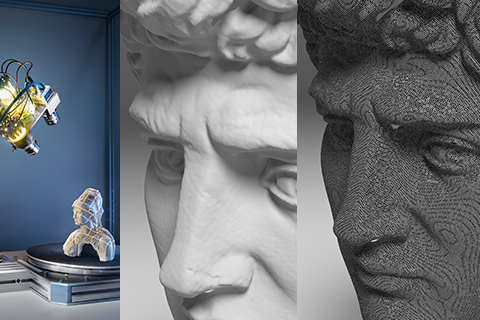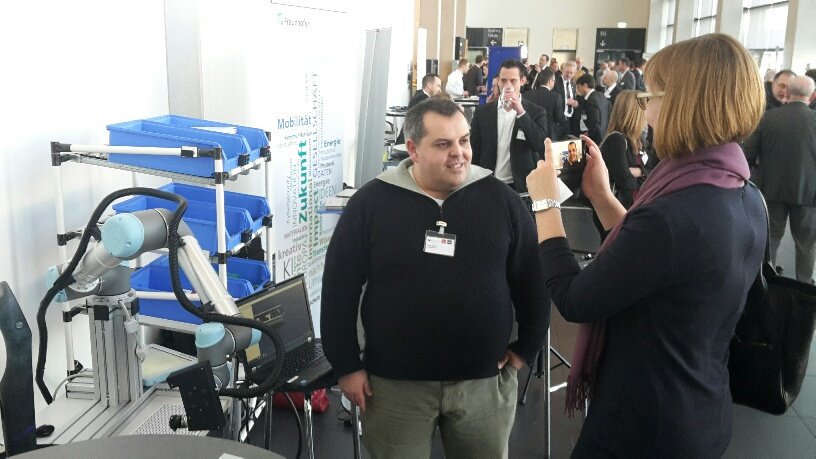The Fraunhofer Institute for Computer Graphics Research (Fraunhofer IGD) in Darmstadt, Germany, has developed an autonomous 3D scanner capable of scanning objects in real time without needing to be taught how to do so.
The institute, which has recently been researching 3D design simulation software and ways to reduce the cost of metal additive manufacturing, combined 3D scanning with AI, 3D modeling, and 3D printing to produce a system capable of manufacturing components in batch sizes of one.
How autonomous 3D scanning works
The system’s hardware consists of a 3D scanner, a robotic arm, and a turntable.
After an object is placed on the turntable, the robot arm moves the scanner around the component so that it can register the object’s full geometry with the minimum number of passes.
During the initial 3D scan, a digital 3D model is created and intelligent “view planning” algorithms calculate what further scans are necessary to fully record the object. The model is then automatically analyzed for its printability, and if approved, the data is sent to a 3D printer for manufacturing.

From manual to autonomous scanning
While other 3D scanners have previously had to be taught how to 3D scan a component or calibrated with CAD models for a “TARGET-ACTUAL comparison,” Fraunhofer IGD’s 3D scanning system is advanced by its view planning technology.
“Our scan system is able to measure any component, irrespective of its design – and you don’t have to teach it,” explained Pedro Santos, department head at Fraunhofer IGD, who previously helped develop the CultLab3D scanning platform. He added:
“You don’t need information about CAD models or templates – in other words, the specifications of standard forms that a component usually has.”
Since the 3D scanning system is able to quickly and independently measure objects entirely unknown to it, it can efficiently reproduce spare parts in batch sizes as low as one. This would be particularly useful for rare and spare car parts.

The use of 3D scanning in cognitive manufacturing
The 3D scanning system is also currently used in the EU-funded “Autoware” project, which is investigating how robots could use the software to become more efficient manufacturing assistants in cylinder assembly. as Santos explained:
“Our 3D scanning system now enables robots —via comparisons with the database — to recognize what component it has in front of it and also to determine which component its human colleague needs next for assembly of the cylinder.”
The autonomous scanning system will be on display at the Hannover Messe from April 23 to 27, 2018 (Hall 6, Booth A30).
Let us know what you think the most important 3D scanning innovation has been this year. Make your nominations for the 3D Printing Industry Awards 2018 now.
For more stories on the combination of 3D technologies and AI, subscribe to our free 3D Printing Industry newsletter, follow us on Twitter, and like us on Facebook.
Features image shows the scanning system, which is able to measure any component in real time, making protracted teaching processes a thing of the past. Photo via Fraunhofer IGD.

